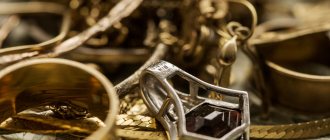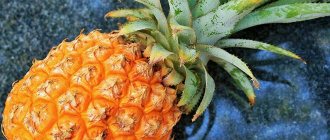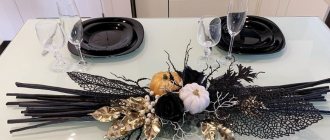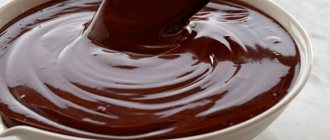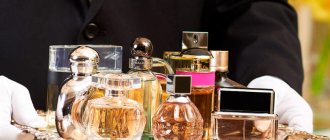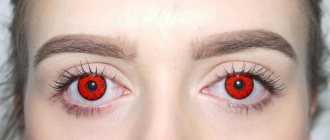"Diamonds are a girl's best friend." This catchphrase is known to everyone. But did you know that a true lady’s best friend is pearls. All imperial houses used it to create family jewels. And now pearl jewelry is a symbol of belonging to high society.
Pearls are spherical formations that appear in sea and freshwater shells.
In order for a pearl to be born, a grain of sand must get between the shells of the mollusk. Gradually it becomes covered with layers of mother-of-pearl (calcium carbonate). It takes 10 years for its diameter to reach 10 mm.
Types of pearls
- Saltwater pearls - formed in a sea oyster in salt water. It can be of two types. Natural - which arose without human intervention. Today its production has been stopped. Cultured - the pearl core does not fall into the shell by accident, but with the help of a person. The further process of pearl formation occurs naturally.
- Freshwater pearls - grown in fresh water, mainly from China. It is much cheaper than the sea one, because up to 20 specimens can grow in one shell. These pearls can also be natural or cultured. It is distinguished by its large size and variety of shapes and colors. But in terms of shine, such products are somewhat inferior to their sea sisters.
There are pearls of different colors from champagne to rich black. Products made from them are much more expensive. But Europeans traditionally prefer white - such jewelry looks better against light skin.
Currently, jewelry stores sell mostly cultured pearls. The leaders in its cultivation are now China and Japan. Here are the main quality criteria that you should pay attention to when choosing jewelry:
- surface smoothness
- shine
- color
- form
- diameter
- degree of matching of pearls.
The cost of the jewelry depends on these factors.
How to choose pearls: types and their features
The natural origin of stone is the merit of mollusks. They secrete nacre to protect themselves from a foreign body that has entered their shell. Depending on where the mollusks live, their pearls are divided into:
- nautical;
- river.
Pearl snails live not only in rivers, but also in lakes. Therefore, the term “freshwater pearls” is considered a more correct name for the second group. It differs from the sea one in its small size and more durable surface layer.
The European pearl mussel, which lives in fresh water bodies, was almost completely exterminated in the process of extracting valuable raw materials. The species is on the verge of extinction
Sea pearls are more varied than freshwater ones. They are divided by color, texture and shape. The difference in these characteristics is due to different climatic conditions in which the snails live.
Depending on their habitat, the following types of pearls are distinguished:
- Akoya . Also called Akoya. Mined in Japan and China. These are round balls with delicate colors in pastel colors: pink, blue, beige. The pebbles are not very large, on average from 2 to 10 mm. But impeccable quality is more common than that of “competitors”.
- Southern. Also called South Sea pearls. Mollusks live in Australia and Indonesia, or bask in the warm waters of the Philippines. They produce large pearls (up to 20 mm) in light shades: white, golden, cream.
- Tahitian. Or Tahitian pearls. It is mined only on the island of Tahiti and in the adjacent Pacific waters. Average diameter: from 8 to 15 mm. But the color palette is huge and includes almost all rich colors: blue, green, purple, black.
- Kasumi. A unique variety produced by selectively selected oysters. She lives in the Japanese lake Kasumi-ga-ura. Most pearls are teardrop-shaped, up to 13 mm in length. Kasumi pearls are highly prized due to their rarity and excellent visual characteristics: bright iridescent luster and color tints.
The shell of one mollusk may contain several pearls. The Black Sea mussel, for example, is capable of simultaneously synthesizing more than a hundred pieces.
The balls turn out to be very tiny. The more pearls in the shell, the smaller they are
Some species are easier to identify by their unusual shape or texture:
- Blister. Bubbly stones with large bulges that are rarely used in jewelry. Only a few craftsmen have enough imagination and patience to process uneven raw materials. Sometimes the result is worth the effort - jewelry with a blister looks amazing and has no analogues.
- Keshi. Flattened pearls, similar to grains. The color palette consists of delicate shades: white, cream, light purple, bluish. Most often used for inlaying rings and rings.
- Souffle. Pearls of rich tones with pronounced iridescent tints and strong shine. It differs from other species in its extraction technology, in which the oyster’s pearl sac is “inflated” using swelling earthy additives.
- Abalon. A rare species that is valued for its rich palette of shades: blue, orange, green, pink, beige, lilac, etc. In shape, they usually resemble a shark tooth or the horn of some animal.
- A separate group is cultured pearls , which are created artificially. Calling it a fake is wrong. A person only plants a nucleus in the snail’s house, and she covers it with mother-of-pearl on her own.
- Another generalized category is baroque. This includes all samples with a non-round shape: oval, cross-shaped, ring-shaped, cylindrical, petal-shaped, etc. Some examples of baroque pearls have such a fantastic structure that they allow you to create jewelry with a unique design.
Most of the raw pearls sold on the world market - about 90% - are cultured stones
Some types of oysters produce pearls without nacre, with a matte surface. The most valuable are konk, ho-kog and melo-melo.
Expert advice on choosing pearl jewelry
- If your budget is limited, take pearls of smaller diameter, but of higher quality. Thanks to the inner glow, they always seem larger.
- For young women, shorter Choker jewelry (40 cm) is recommended. They will be clearly visible in any cutout. If you wish, you can add new pearls to the thread over time.
- A pearl string 120 cm long will go perfectly with an evening dress. It can be worn in several layers or tied in a knot.
- Remember, the richer the shine and the more iridescent the tints, the less noticeable minor imperfections are. Choose the shiniest pieces. Don't forget that the light should come from the depths, as if the core were glowing in it.
- Choose a clasp that will help turn the beads into a bracelet. This will add variety to your look.
- Like everything else, pearls are subject to fashion trends. Today, irregularly shaped baroque pearls are highly valued.
Whatever pearl jewelry you choose, it will undoubtedly indicate your sophisticated taste and add elegance to your look.
When were pearls born?
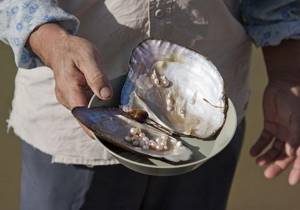
Our ancestors knew about pearls and their special properties in BC. Ancient legends contain references to stones that adorned Indian leaders. Ancient manuscripts contain stories about precious pearls. In the Middle East, near the Indian Sea in South America and Northern Russia, they decorated weapons, armor, clothing and headdresses.
River and sea pearls
Sea pearls have regular, geometrically perfect shapes. River stones have a slightly uneven surface and, like sea stones, a rich color palette.
In Russian rivers you can find mineral formations of almost any shade. In addition, freshwater minerals are mined in Germany, China and the USA.
The largest is the “Pearl of Allah”. It is oblong, weighs 6.5 kg and was found in a mollusk weighing 300 kg.
Basic verification methods
You can determine the authenticity of pearls at home using the following methods:
- visual;
- mechanical;
- chemical-physical;
- formal.
By combining these methods, confidence in the results can be significantly increased.
Visual inspection methods
Visual assessment includes examination of characteristics such as:
- color;
- form;
- structure;
- shine;
- weight.
How to distinguish natural pearls from artificial ones?
